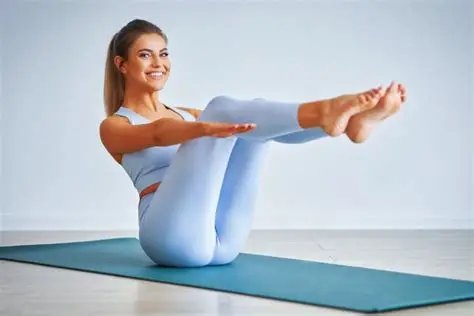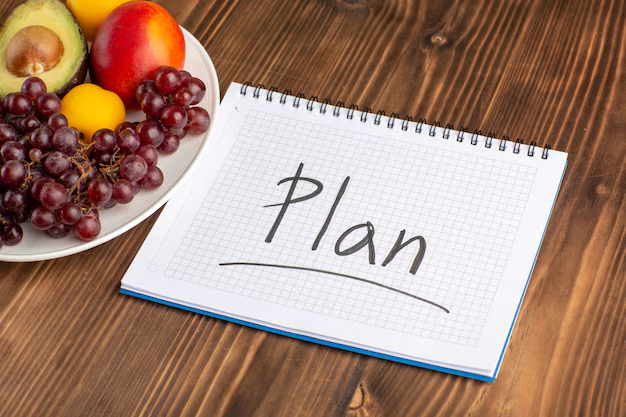The idea of practicing yoga every day might sound daunting, especially with busy modern lives. Visions of long, intense sessions or contorting into impossible poses can deter many. However, a daily yoga practice doesn’t need to be hours long or physically demanding. It’s about consistency, mindfulness, and creating a habit that nurtures your body and mind.
Yoga is an ancient practice originating in India, dating back over 5,000 years. Its philosophical roots are deep, aiming for a union of mind, body, and spirit. While Western adaptations often focus heavily on the physical postures (asanas), traditional yoga encompasses much more, including pranayama (breathing techniques), meditation, and ethical principles. Throughout history, countless individuals have turned to yoga for its profound benefits, from enhancing physical health to cultivating inner peace. The beauty of yoga lies in its adaptability; it is truly for every body, regardless of age, flexibility, or fitness level.
This comprehensive “how-to” guide will empower you to establish and maintain a fulfilling daily yoga practice, making it an integral and beneficial part of your life.
Why Practice Yoga Every Day?
Consistent daily yoga practice offers a multitude of benefits that accumulate over time:
- Increased Flexibility: Regular stretching in various poses lengthens muscles and increases range of motion in joints, reducing stiffness and improving overall mobility.
- Improved Strength and Tone: Holding poses (asanas) engages and strengthens various muscle groups, building lean muscle tone throughout the body.
- Better Balance: Many yoga poses challenge and improve your sense of balance, which is vital for coordination and preventing falls, especially as you age.
- Enhanced Respiration and Energy: Pranayama (breathing exercises) improve lung capacity and efficiency, leading to increased oxygen intake, better circulation, and higher energy levels.
- Stress Reduction: Yoga’s emphasis on breath and mindfulness helps activate the parasympathetic nervous system, reducing stress, anxiety, and promoting relaxation.
- Mental Clarity and Focus: The meditative aspects of yoga train your mind to stay present, improving concentration, cognitive function, and emotional regulation.
- Pain Relief: Regular practice can alleviate chronic pain, including lower back pain, headaches, and arthritis, by improving posture, strengthening supporting muscles, and promoting relaxation.
- Better Sleep: By calming the mind and body, daily yoga can significantly improve sleep quality and address insomnia.
- Improved Posture: Strengthening core muscles and increasing spinal flexibility naturally leads to better posture.
- Mind-Body Connection: Yoga fosters a deeper awareness of your body’s sensations and signals, leading to better self-care and intuitive movement.
Essential Preparations for Daily Yoga Practice
Setting yourself up for success begins before you even step onto the mat.
- Find Your “Why”
Understanding your motivation is key to building any habit, especially daily yoga.
- Action: Reflect on why you want to practice yoga every day. Is it for stress relief, increased flexibility, better sleep, mental clarity, or physical strength? Write down your top reasons and keep them in mind. This intrinsic motivation will be your anchor on days when motivation wanes.
- Choose Your Time & Duration
Consistency is more important than duration. Even 10-15 minutes a day is highly effective.
- Action:
- Morning Yoga: Many prefer morning practice to set a positive tone for the day. It helps energize the body and sharpen the mind.
- Evening Yoga: An evening routine can help you unwind, release tension, and prepare for restful sleep.
- Lunch Break Yoga: A short session can break up your workday and refresh your focus.
- Set a Realistic Duration: Start small. Aim for 10-20 minutes daily. As you build consistency and strength, you can gradually increase the duration. Five minutes of mindful movement is better than no practice at all.
- Tip: Block out this time in your calendar just like any other important appointment.
- Designate Your Space
Having a dedicated, inviting space makes it easier to show up.
- Action:
- Find a quiet corner in your home where you won’t be disturbed.
- Ensure there’s enough room to move freely without hitting furniture.
- Keep your yoga mat and any props (blocks, straps, blankets) easily accessible. Seeing them can serve as a visual reminder.
- Consider adding elements that enhance relaxation, like dim lighting, a plant, or a scented candle (if safe).
- Gather Essential Props (Optional but Helpful)
While you don’t need anything to start, a few basic yoga props can enhance your practice, particularly for beginners or those working on flexibility.
- Yoga Mat: Provides cushioning and grip. A good mat is perhaps the most essential item.
- Yoga Blocks: Versatile for support, deepening stretches, and making poses more accessible (e.g., bringing the floor closer).
- Yoga Strap: Helps extend your reach in stretches and improve flexibility, especially for hamstrings and shoulders.
- Blanket: Can be folded for padding under knees or hips, or rolled for support in restorative poses.
- Comfortable Clothing: Wear clothes that allow for a full range of movement without restriction.
- Choose Your Learning Resource
You don’t need a studio membership to practice daily.
- Action:
- Online Classes/Apps: Numerous yoga apps (e.g., Down Dog, Alo Moves, Daily Yoga, Yoga Studio) and YouTube channels (e.g., Yoga With Adriene) offer guided classes for all levels and durations. Many provide customizable practices.
- Books/Videos: If you prefer self-guided practice, invest in a good yoga book or DVD that demonstrates poses clearly.
- Local Studio: If your budget allows, occasional in-person classes can provide valuable feedback and deeper instruction from a qualified instructor.
Building Your Daily Yoga Routine: Step-by-Step
Here’s how to structure your daily practice, focusing on accessibility and consistency.
Step 1: Start with Intention and Centering (1-2 minutes)
Begin by transitioning from your daily activities to your yoga practice.
- Action:
- Sit comfortably on your mat (e.g., Easy Pose / Sukhasana).
- Close your eyes gently or soften your gaze.
- Bring awareness to your breath, observing its natural rhythm without trying to change it.
- Set an intention for your practice – whether it’s to find peace, build strength, or simply breathe.
Step 2: Warm-Up and Gentle Movement (3-5 minutes)
Prepare your body for deeper stretches and movements.
- Action:
- Cat-Cow Pose (Marjaryasana-Bitilasana): On hands and knees, arch your spine on inhale (Cow) and round on exhale (Cat). Great for spinal flexibility. (3-5 rounds)
- Thread the Needle Pose: From hands and knees, thread one arm under the other armpit, resting on your shoulder, for a gentle shoulder stretch. (30-60 seconds per side)
- Gentle Neck Rolls or Shoulder Rolls: Release tension in the upper body.
Step 3: Core Asanas (5-10 minutes)
Incorporate a few foundational poses that offer full-body benefits.
- Action (Choose 2-4 poses that feel good for your body):
- Downward-Facing Dog (Adho Mukha Svanasana): Stretches hamstrings, calves, shoulders; lengthens the spine. Modify by bending knees deeply if hamstrings are tight.
- Mountain Pose (Tadasana): Seems simple, but focuses on grounding, alignment, and body awareness. Great for recentering.
- Standing Forward Bend (Uttanasana): Stretches hamstrings and spine, calms the nervous system. Bend knees generously.
- Cobra Pose (Bhujangasana) or Sphinx Pose: Gentle backbends that strengthen the back and open the chest. Keep elbows close to the body.
- Low Lunge (Anjaneyasana): Opens hips and stretches the front of the thigh.
- Bridge Pose (Setu Bandhasana): Strengthens glutes, hamstrings, and back, and opens the chest.
- Tree Pose (Vrksasana): Improves balance and strengthens ankles and legs. Use a wall for support if needed.
- Tip: Hold each pose for 3-5 breaths, focusing on alignment and sensation, not perfection. Listen to your body and never push into pain.
Step 4: Cool-Down and Gentle Stretches (3-5 minutes)
Slowly bring your heart rate down and relax your muscles.
- Action:
- Child’s Pose (Balasana): A restorative and calming pose for the back and hips. Kneel, fold forward, resting forehead on the mat.
- Supine Spinal Twist: Lie on your back, knees bent, and gently drop knees to one side, then the other, for a gentle spinal release.
- Happy Baby Pose (Ananda Balasana): Lie on your back, hug knees to chest, grab outer feet, and open knees wider. Gentle hip opener and lower back release.
Step 5: Savasana (Corpse Pose) and Relaxation (2-5 minutes)
This is a non-negotiable part of every yoga practice, allowing your body to integrate the benefits of the poses.
- Action:
- Lie flat on your back, arms slightly away from your body with palms up, legs relaxed.
- Close your eyes and allow your body to feel heavy and sink into the mat.
- Focus on your breath, letting go of any thoughts or tension.
- Set a timer if needed, but allow yourself to fully relax.
Maintaining Consistency and Overcoming Challenges
- Be Flexible with Your Schedule: Some days you might have 30 minutes, others only 10. That’s perfectly fine. A shorter, consistent practice is more beneficial than sporadic long sessions.
- Listen to Your Body: Yoga is not competitive. Respect your body’s limits, especially if you’re feeling tired or have minor aches. Modify poses or skip them if they cause pain.
- Don’t Aim for Perfection: Focus on the breath and the feeling in your body, not on achieving a “perfect” pose. Every body is different.
- Embrace Rest: Restorative poses and Savasana are just as important as active poses.
- Vary Your Practice: To keep things interesting and work different muscle groups, explore different styles of yoga (e.g., gentle Hatha, flowing Vinyasa, calming Yin) or try different online instructors.
- Track Your Progress: Notice how your flexibility, strength, mood, or sleep improves over time. This can be a great motivator.
- Journaling: After your practice, take a moment to jot down how you feel. This helps reinforce the positive impact.
- Join a Community: Whether online or in-person, connecting with other yogis can provide support and inspiration.
Practicing yoga every day is a journey, not a destination. By integrating even short, mindful sessions into your routine, you’ll unlock profound physical, mental, and emotional benefits that enrich your entire life.
Frequently Asked Questions (FAQ)
Q1: How long should I practice yoga every day as a beginner?
As a beginner, even 10-15 minutes of yoga every day is highly beneficial. Consistency is more important than duration. You can gradually increase your practice time as you build strength, flexibility, and comfort.
Q2: Do I need to be flexible to start practicing yoga daily?
Absolutely not! This is one of the most common yoga myths. Flexibility is a result of practicing yoga, not a prerequisite. There are modifications for every pose, and you’ll find that your flexibility will naturally improve with consistent practice.
Q3: What type of yoga is best for daily practice at home?
For daily practice at home, especially for beginners, Hatha yoga and Vinyasa flow are great starting points.
- Hatha Yoga: Focuses on holding poses for longer, emphasizing alignment and breath. It’s slower-paced and good for learning fundamentals.
- Vinyasa Flow: Links breath with movement in a flowing sequence. You can find gentle Vinyasa suitable for daily practice.
- Restorative Yoga / Yin Yoga: Excellent for days when you need deep relaxation and passive stretching.
Q4: Can daily yoga help with stress and anxiety?
Yes, daily yoga practice is highly effective for stress relief and reducing anxiety. The combination of physical postures, pranayama (breathing techniques), and meditation helps calm the nervous system, lower cortisol levels, and promote a sense of well-being and mental clarity.
Q5: What if I miss a day of practice?
It’s perfectly normal to miss a day. Don’t let it derail your entire routine. The key is to get back on the mat the next day. A missed day is an opportunity to recommit, not a reason to quit. Consistency over perfection is the goal.
Q6: Do I need special equipment to practice yoga at home?
The most essential piece of equipment is a yoga mat for cushioning and grip. Beyond that, yoga props like blocks and straps are highly recommended for beginners to assist with poses and deepen stretches, but they are not strictly necessary to start. Comfortable clothing that allows free movement is also important.
Q7: Can I practice yoga if I have an injury or specific health condition?
If you have an injury or a specific health condition, it is crucial to consult with your doctor or a physical therapist before starting any new exercise routine, including yoga. Inform your yoga instructor (if taking classes) or choose online resources that offer modifications for various conditions. Listen to your body and avoid any movements that cause pain.





